Expertise & Framework

ENTERPRISE ARCHITECTURE MANAGEMENT IS A JOURNEY, NOT A PROJECT.
Requirements
EAM implementation
In order to make EAM Implementation a success in your company, not only the method but also the language, the experience and the tool are decisive.
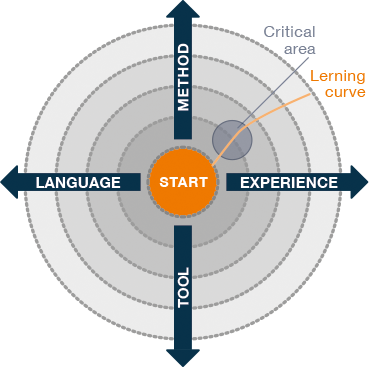
Illustration from “Compendium on Enterprise Architect from SparxSystems

Method
We apply proven technologies and open standards, including “The Open Group Architecture Framework” (“TOGAF®”). Various frameworks are used, which also cover specific topics (e.g. “cyber security modeling”) or industry requirements/standards.

Language
Enterprise Architecture Management also means communication: communication about business processes, resources and how they are connected. Information technology knows more than just UML for modeling – we at Sparx Services speak it: Also “ArchiMate®” or “Business Process Model and Notation” (BPMN) are languages we use at and with our customers.

Experience
As long-time enterprise architects and enterprise architect enthusiasts, we are in the position to accompany large companies in software-intensive industries. More about this under references & use cases.

Tool
Our tool is “Enterprise Architect” from Sparx Systems. We have the necessary competence, expertise and professional experts to ensure efficient, targeted use.

Through our experience in customer projects we understand different frameworks and their impact on the design of EAM projects.
Enterprise Architecture Management fulfils different objectives in companies. In order to achieve these, different approaches are available. In addition to the methodology, there are also frameworks established in practice, which can be both industry-specific and industry-neutral.
Enterprise Architecture Management allows an overall view of company structures and the life cycle, from:
- “Innovation” – definition of new initiatives over
- “Change Management” – necessary changes in organization and IT to
- “Documentation” – Describe the current status.
Through our experience in customer projects we understand different frameworks and their impact on the design of EAM projects.
We at Sparx Services support our customers in the selection and development of frameworks. In the process, various questions arise that lead to the approbriate approach:

What is the main objective?
Are these more on the strategic or operational level? Should innovation potential be discovered or should the existing use of resources be made transparent? Is change management in the foreground or is documentation the first goal on the EAM journey? Is there a common framework for the company’s industry that is suitable for exactly this objective?
What knowledge is required in the framework?
Depending on the characteristics of the framework and the strategic or operational objectives, the knowledge level of modeling languages leads to faster results.
Which standards are used? And is the design framework based on rules or templates?

This industry-neutral methodology allows for individual modeling, be it for the uniform corporate strategy, resource allocation, requirements modeling, simulation of business processes.
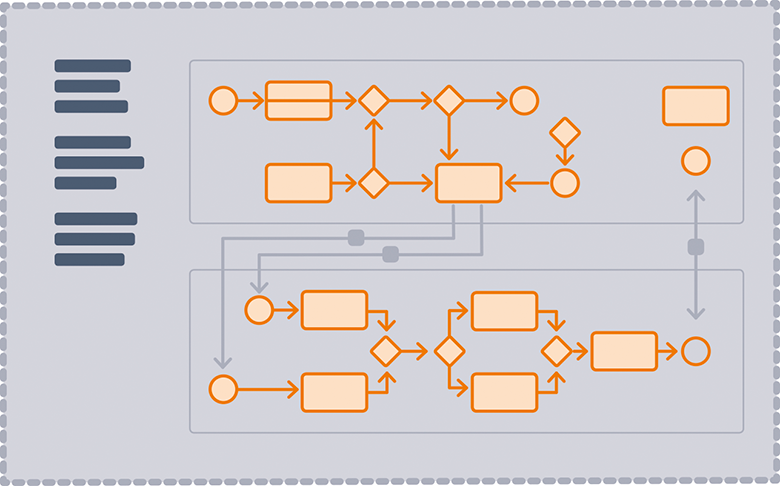
This industry-neutral methodology enables individual modelling, be it for the uniform corporate strategy, resource allocation, requirements modelling or simulation of business processes.
Objective
Innovation
- Unify corporate strategy and identify potential
- Simulation and evaluation of business processes
- Visual execution analysis
Change management
- Modeling of the enterprise architecture with ArchiMate
- Modeling of business processes with PBMN
- Revealing gaps in the solution with the RS Matrix
Documentation
- Manage workflows / monitor organizational charts
- Design requirements, allocate resources, manage traceability
- Modeling system users and how they interact with the system = USE CASE diagram
- Manage projects with Kanban Diagrams
- Creating a software release roadmap
Knowledge / Modeling language
- UML, ArchiMate, BPMN
- certifications: UML 1+2 with Enterprise Architect
Standards
TOGAF
Basis
- Individual design framework depending on the user company.
- External support with consulting and training creates a solid basis.
- Industry neutral

As an industry-independent system, a metamodel enables the development of Enterprise Architecture Management, combined with the use of already stored elements and the corresponding basic building blocks.
Objective
Innovation
-
Mapping the innovation process with the predefined meta model
-
transparency for innovation potentials in the company
Change management
- Designing and accompanying uniform and desired transformation processes
Documentation
-
Document the modeling basis for future models and diagrams with the associated rules and properties
-
Definition of an own meta model
Knowledge / Modeling language
-
UML, ArchiMate, BPMN
-
certifications: EA including UML, ArchiMate, BPMN
Standards
-
TOGAF (Framework -This framework combines business architecture, information architecture and infrastructure architecture. The TOGAF® standard is an open and vendor-independent method for developing and managing enterprise architectures).
-
IT4IT
Basis
-
Rule-based
-
External support with consulting and training creates a solid basis.
-
Industry neutral
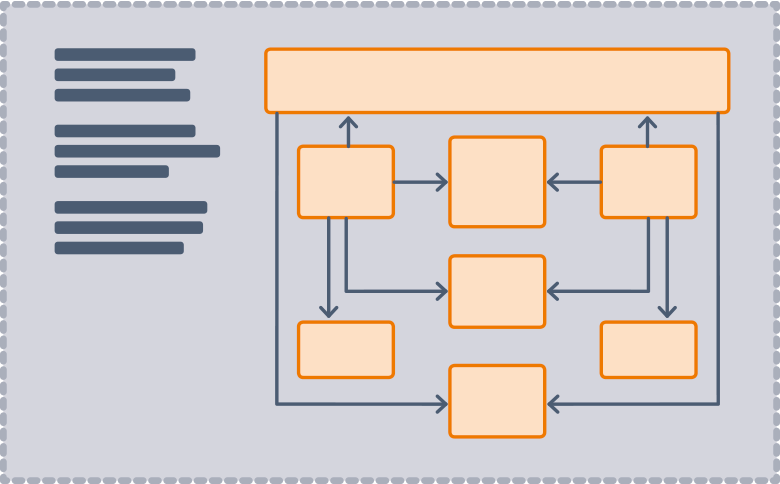
As an industry-independent system, a metamodel enables the development of Enterprise Architecture Management, combined with the use of already stored basic building blocks.

Different industries work with existing industry frameworks on which EAM can be built, such as REFRAME® or Panorama 360 for insurance companies. Thus, regulatory requirements (e.g. IFRS 17 for insurance companies) can also be fulfilled.
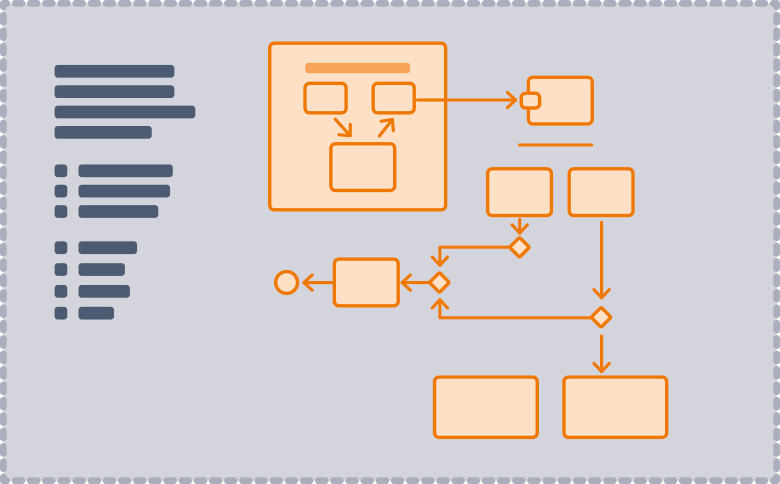
Different industries work with existing industry frameworks on which EAM can be built, such as REFRAME® or Panorama 360 for insurance companies. Thus, regulatory requirements (e.g. IFRS17 for insurance companies) can also be fulfilled.
Objective
Innovation
- capability maps
Change management
- Various Heat Map e.g. according to protection class, according to costs, according to age of the application, according to age of the application,
- Application portfolio analysis
- Architecture Dependency Map
- SWOT analysis
- Development scenario of the BSM
Documentation
- Business Support Matrix
- Roap Maps
- Business Object Flow Map
Innovation
- Knowledge / Modeling language
- Standards
- Basis
Knowledge / Modeling language
-
ArchiMate, BPMN
-
certifications: UML with ArchiMate and BPMN
-
External support with consulting and training creates a solid basis.
Standards
- TOGAF
- IT4IT
Basis
-
Template based
-
Industry-specific

Labnaf is a unified framework and supporting software for visualizing your enterprise and for driving transformations. It brings productivity, consistency and cross-discipline collaboration by unifying and extending standards into one single process, modeling language and software.
Objectives
- Understand your organization
- Envision its future
- Plan transformations
- Describe architecture solutions
- Start your journey right away by using a unified transformation solution that scales and that is ready to go
- Enable direct, continuous, end to end collaboration between disciplines by sharing a common transformation process, modeling language, repository and software
Knowledge / Modeling Language
- Labnaf Framework, PESTEL, Porter’s 5 Forces Analysis
- Certifications: Labnaf and Enterprise Architect, SaFe, TOGAF
- External support with consulting and training creates a solid basis.
Merged Standards, Languages and Best Practices
ISO/IEC/IEEE 42010, IT4IT, TOGAF, Archimate, BPMN, PESTEL Analysis, Porter’s Five Forces Analysis, Business Model Generation, Strategy Map & Balanced Scorecard, SAFe and Gartner EA Stage Planning.
Basis
-
Template and rule-based, depending on the specification
-
Industry neutral
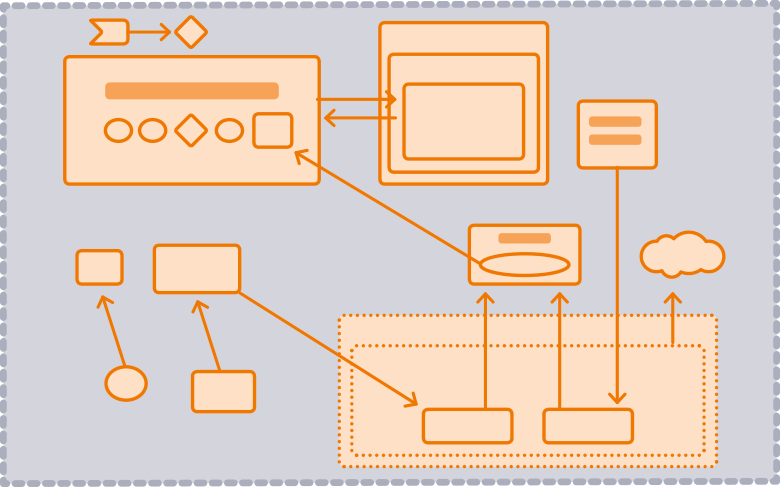
Labnaf offers a strategic architecture framework for the digital transformation in companies. It enables change management and end-2-end solution architecture from an existing building block.
Labnaf in use – Testimonials
 Luc Alix – Head of Architecture
Luc Alix – Head of Architecture
The Belgian National Railways Company SNCB has developed an architecture continuum using Enterprise Architect over the last three years. With more than 1000 applications in use and a huge volume of data, this was not an easy task. Today, IT decisions can be made more easily based on reliable information, and the company is now able to move toward a modern IT landscape.
 Alain Garsoux – Enterprise Architect
Alain Garsoux – Enterprise Architect
Labnaf provides straight through collaboration with a single language from idea to software in production.
During the embedding of the Labnaf solution at Belgian Railways, we specified guidelines for solution architects. Standard architectural views were defined to support the work of 12 Enterprise Architects and 50 Solution Architects. Thanks to pre-fab architecture diagrams, we capture our complex IT landscape into the architecture knowledge database (Continuum). The collected raw data is transformed into actionable and meaningful information to support decision making. With this way of working, an updated documentation is continuously delivered, which is of decisive importance for traceability and further developments.
 Tom Van Looy
Tom Van Looy
Enterprise Business Architect & Service Design Coach
Every architectural challenge is best served by an integral and consistent approach where architecture frameworks, standards, business services and products but also software artefacts can easily be aligned and can iteratively be refined. Equally architectural governance and delivery are two very different beasts but ideally they evolve together without long studies and deliberations on methods and then lots of effort to puzzle the pieces together.
Labnaf is “all-in-one”, “one-for-all” and “future-proof” supporting ALL your architectural needs and your company’s strategy. You don’t need to re-invent meta-models or practices, you can go straight into real architecture work without a large time-investment upfront. Labnaf allows you to model and integrate all levels of detail : zooming into your applications, businesses or projects when needed yet simultaneously keeping the big picture clear through dashboards, perspectives and charts. Sharing and reusing architectural work becomes easy and therefore it scales.
 Dominik Van Hoecke
Dominik Van Hoecke
Enterprise Architect & Solution Architect
We had at the same time to migrate thousands of applications to the cloud, outsource application development and operations to an external provider and yet provide new solutions to fulfill business demand. With the Labnaf language and model repository we could collect and trace application data, map applications to understand what they are used for and formalize the flow of information exchanged. We easily specified what is AS-IS, Transition and TO-BE, because, in Labnaf, time is just another dimension on elements and relationships. We synchronized the Labnaf repository with a CMDB and automatically calculated documentation completeness. Model errors were automatically detected and error messages routed to architects assigned to the domain or project.
The application portfolio was continuously enriched and validated, so we could easily define application migration plans. And we could also easily transfer knowledge to our service provider.
